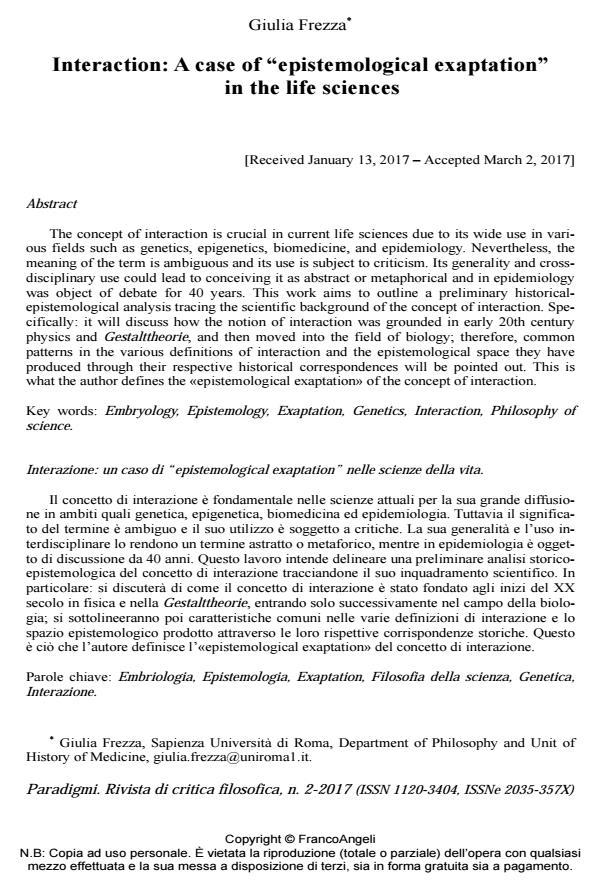Interaction: A case of "epistemological exaptation" in the life sciences
Journal title PARADIGMI
Author/s Giulia Frezza
Publishing Year 2017 Issue 2017/2
Language English Pages 16 P. 191-206 File size 177 KB
DOI 10.3280/PARA2017-002013
DOI is like a bar code for intellectual property: to have more infomation
click here
Below, you can see the article first page
If you want to buy this article in PDF format, you can do it, following the instructions to buy download credits

FrancoAngeli is member of Publishers International Linking Association, Inc (PILA), a not-for-profit association which run the CrossRef service enabling links to and from online scholarly content.
The concept of interaction is crucial in current life sciences due to its wide use in various fields such as genetics, epigenetics, biomedicine, and epidemiology. Nevertheless, the meaning of the term is ambiguous and its use is subject to criticism. Its generality and cross-disciplinary use could lead to conceiving it as abstract or metaphorical and in epidemiology was object of debate for 40 years. This work aims to outline a preliminary historical-epistemological analysis tracing the scientific background of the concept of interaction. Specifically: it will discuss how the notion of interaction was grounded in early 20th century physics and Gestalttheorie, and then moved into the field of biology; therefore, common patterns in the various definitions of interaction and the epistemological space they have produced through their respective historical correspondences will be pointed out. This is what the author defines the «epistemological exaptation» of the concept of interaction.
Keywords: Embryology, Epistemology, Exaptation, Genetics, Interaction, Philosophy of science.
Giulia Frezza, Interaction: A case of "epistemological exaptation" in the life sciences in "PARADIGMI" 2/2017, pp 191-206, DOI: 10.3280/PARA2017-002013